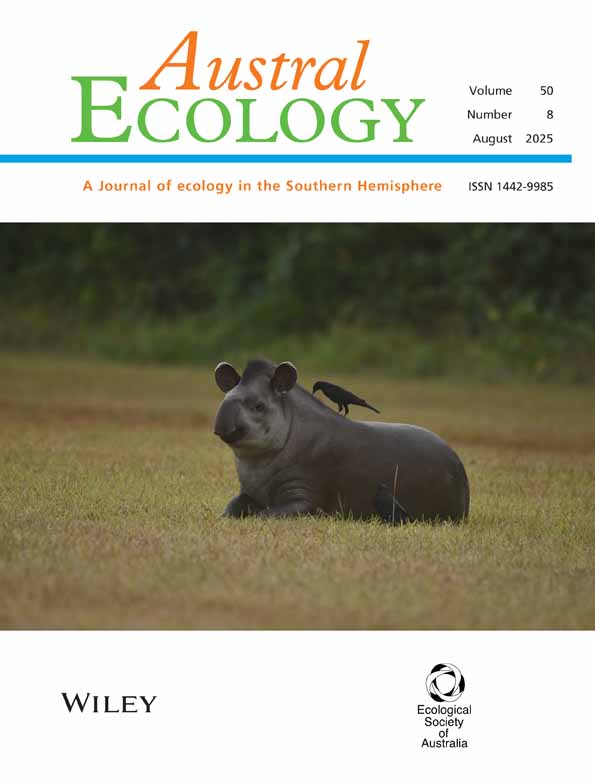Comparison of seed removal by ants in vegetation on fertile and infertile soils
1 Riley St, North Sydney, NSW 2060, Australia.
Abstract
Plants which have seeds adapted for dispersal by ants (myrmecochores) are more common in some vegetation types than others. In Australia, myrmecochores are common in sclerophyll shrublands which are associated with infertile soils but not in forests on fertile soils. One hypothesis to explain this difference is that ants are less abundant or less active in seed removal on fertile soils. A test of this hypothesis was carried out on four sites in the Royal National Park, south of Sydney, by measuring the number of myrmecochorous seeds removed by ants in a 24 h period. It was found that the removal rates of seeds were slightly higher on fertile sites although this difference was not significant. The hypothesis that a lower removal rate on fertile soils could account for the lower percentage myrmecochory was therefore rejected. Apart from the gross removal rate of seeds by ants, other differences in ant behaviour might be important. It is possible that a greater proportion of ant species unfertile soils are seed predators or ineffective seed dispersers, and evidence obtained indicates that this is worthy of further research.




